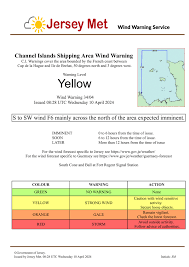Wind Warnings: What You Need to Know

Introduction
Wind warnings are crucial alerts issued by meteorological authorities to inform the public about imminent high winds that can pose significant hazards. These warnings are especially relevant as climate change continues to intensify weather patterns, leading to more frequent and severe wind events. Understanding wind warnings helps individuals and communities prepare, ensuring safety in potentially dangerous conditions.
What Are Wind Warnings?
Wind warnings are categorized based on their severity, with different thresholds depending on the location and the local weather context. Generally, they can include:
- Wind Advisory: Indicates that sustained winds of 20 to 30 mph and/or gusts of 30 to 50 mph are expected.
- High Wind Warning: Issued when winds of 40 mph or higher are forecasted.
- Gale Warning: Indicates winds of 39 to 54 mph, often relevant for marine conditions.
- Storm Warning: Issued for winds of 55 mph or more.
In Canada, the Meteorological Service monitors conditions and issues warnings to ensure people are prepared.
Recent Events
In recent weeks, several regions across Canada faced powerful wind events that resulted in widespread damages and disruptions. For instance, Ontario experienced gusts over 100 km/h (62 mph), leading to fallen trees, power outages affecting thousands of residents, and numerous road closures. Emergency services advised the public to stay indoors and avoid unnecessary travel during these events. The high winds were attributed to a passing cold front and were conducive to severe weather development, highlighting the need for wind warning awareness.
Preparedness and Safety Tips
When a wind warning is issued, it is essential for individuals to take prompt safety measures. Here are some tips:
- Secure outdoor objects that could become projectiles in high winds.
- Stay indoors and avoid driving unless absolutely necessary.
- If you must travel, monitor local news and weather updates for the latest conditions.
- Prepare an emergency kit that includes essentials like water, food, and medical supplies.
Civic bodies often conduct awareness campaigns to educate the public on the significance of these alerts and encourage safety practices. Following these guidelines can significantly reduce the risk of injury and property damage during severe wind conditions.
Conclusion
Wind warnings play a critical role in public safety, offering essential information about adverse weather conditions. As climate challenges continue, being informed about how to respond to such alerts is more crucial than ever. Communities that prioritize preparedness will be better equipped to handle these increasingly common weather events, ensuring the safety and resilience of their residents.









